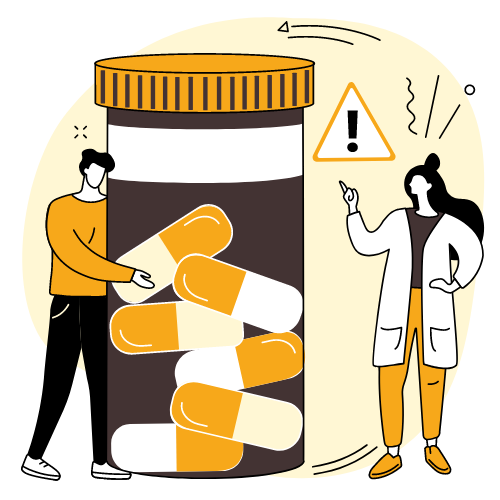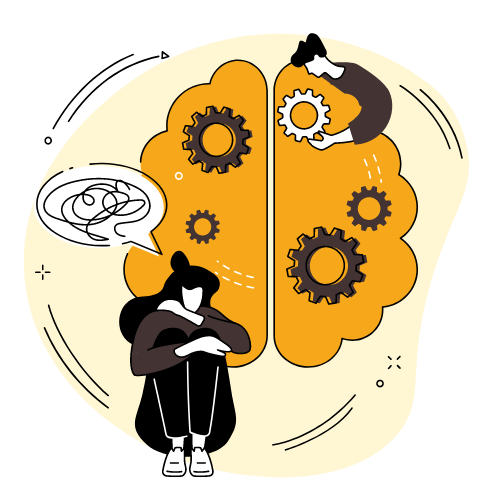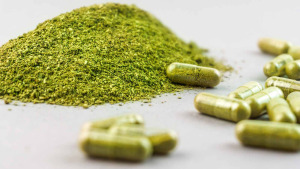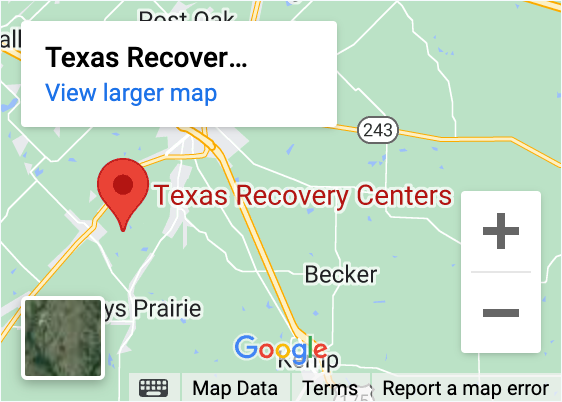If you were to smoke a few joints or take some hits from a marijuana pen for a week, chances are a urine test would be positive a few days later. But what about two weeks later? A month? Would a hair sample test be different? In short, how accurate are drug tests?
Marijuana and the science behind how long it can be detected in the human body is a complex science full of variables and few control samples. Factors such as the method of use, frequency of use, and passage of time before testing with abstaining are all part of this puzzle. This is also true relating to the testing source, whether it be from a urine sample, blood analysis, saliva sample, or hair test.
At Texas Recovery Center, our marijuana addiction treatment program in Texas provides an opportunity for people to find the inner strength to overcome their dependence on marijuana. Our marijuana rehab center in Texas is the perfect setting for people to gain healthy coping mechanisms that don’t involve marijuana use. Find out more about how we can help you get back on the right track today by calling 214.295.6503 or completing our online form.
Scenarios Where Upcoming Marijuana Tests Cause Anxiety
Example 1: Desmond
Desmond was very excited after his lengthy job interview. He was fully qualified as a civil engineer with three years of solid work experience since graduating from college. He worked 40 hours a week on challenging projects and spent the weekends hiking with buddies and then hanging out afterward to smoke a little reefer. This had been his routine for nearly the past year. Had it been going on that long, he wondered, somewhat surprised. With a twinge of nervousness, he thought back to the human resources assistant who mentioned a drug screening location would be sent to him for a test if an employment offer was made. He called a buddy who suggested he start a detox plan of vitamins and juices with “Lotsa water too, man. You know, just to be safe.” Feeling the tensions begin to mount, Desmond wondered if his weekend relaxing activity caused more stress than it was worth.
Example 2: Sydney
Sydney participated very productively in her outpatient treatment program for substance use disorder. She drank for about ten years and had a misdemeanor first offense for driving under the influence. While her court sentence required her to attend weekly Alcoholics Anonymous meetings during her six-month probation, she quickly realized she would benefit from more intense treatment. Ten years of bad habits and lifestyle choices had caught up to her. She had even been selling marijuana to support herself when she lost her long-time receptionist job at a veterinary clinic due to yet another hangover. She had just told the court she was unemployed.
Her marijuana addiction treatment program started with inpatient treatment, where she stayed on-site and learned how beneficial a schedule was to building a healthy routine. Her program even offered therapy with pets and had an equine program where she could spend bonding time grooming her horse and seeing how it sensed her nervousness at first. As her confidence grew, so did her riding skills. Through therapy, she had also learned to make a goal list, one of which was to reach out to her previous employer. The veterinarian team had given her strong performance feedback for her six years and very reluctantly let her go. Seeing the positive path she was working on had helped, they agreed to a probationary period with random screenings, all of which she passed with flying colors. But there was a catch. She had spent time with friends who smoked marijuana over the weekend and was nervous if it would show up in her drug test. She spoke with her therapist and discussed options to handle this potential stumbling block. Her therapist said a test would most likely show direct use, but second-hand experience data is relatively unknown. They also spoke about how she would handle the situation differently in the future.
Sydney would tell her friends she had to consider her employer’s drug-test policy and simply say she’d like to join them when weed would not be in play. With the solution-based approaches she had learned in treatment, Sydney decided to err on the path of full disclosure with her employer. She could feel the change in her attitude where she used to ignore problems, hoping they would go away. She wanted to address this straight up and show her employer she had nothing to hide.
Example 3: Cody
Every day at 3 p.m., Cody called a nine-digit phone number and waited for the automated number and color combo to be announced. Cody’s color was yellow, and his number was seven. If either one was announced, that meant he would have to make an excuse to leave work early the next day to make his drug-screening test before the building closed at 4 p.m., the same time his work shift was over.
The tests were random, and he usually had to go in about once every two or three weeks. Cody had been pulled over for a broken headlight, and the police officer did a probable cause search when the smell of marijuana came from the car. Not only did he find Cody’s stash, but his buddy’s long-lost stash under the passenger seat. The next thing he knew, Cody was charged with possession and sentenced to thirty days in jail, suspended, and a year of probation. He had managed to keep his job through it all but didn’t want his employer to know in case it would affect a promotion.
Then he got a little cocky. He had just tested the day before and decided to cap off the night with some hits of a friend’s vape pen. What would be the chances he would have to go right back for testing, right? He listened to a recorded voice call the color red and slowly relaxed, only to have his dropped head shoot up when the number seven was called. He hung up and immediately dialed back. It just couldn’t be. But it was. He could hear his girlfriend’s voice as if it were speaking his thoughts, asking how he could have taken that chance and what was it going to mean for work? For court? These examples demonstrate just a few of the types of situations that make people wonder about the reliability of marijuana tests and how long weed stays in the system. Let’s talk about how it gets in the system to begin with.
How Does Marijuana Interact with the Human Body?
Marijuana is generally a green dry flower mix from the female cannabis plant. It has traditionally been smoked in a rolled cigarette called a joint, a cigar wrap called a blunt, or in a pipe. Other methods have included water pipes or bongs. When used medicinally, the leaves are used to brew tea or mixed into foods, known as edibles. More recently, vape pens have entered the field for marijuana consumption, and as stronger forms of THC are available, vaporizers are also increasingly used to consume marijuana. Stronger forms of marijuana include sinsemilla (from specially tended female plants) and concentrated resins containing high doses of marijuana’s active ingredients.
What Is Tetrahydrocannabinol (THC)?
THC is a psychoactive compound, one of many compounds found in the cannabis plant. THC is used in marijuana and can give one the euphoric feeling described as a “high.” It binds with receptors that release neurotransmitters in the brain, affecting mood, sleep, memory, and pain. THC acts on specific brain cell receptors that ordinarily react to natural THC-like chemicals. These natural chemicals play a role in normal brain development and function. Marijuana over-activates parts of the brain that contain the highest number of these receptors. If inhaled or vaped, the THC will be carried through the bloodstream to the brain as described above, but it doesn’t just stop there. It extends beyond the brain through the body. If ingested through an edible, the THC will pass through the stomach and move to the liver and the spleen. If consumed through tea and marijuana leaves, the THC is generally absorbed at a diluted level. It has proven medically helpful to control nausea and vomiting for patients undergoing cancer treatments and to improve appetite loss due to other conditions such as HIV. Possible side effects include the inability to concentrate and memory loss on the cognitive side, as well as dizziness, vomiting, loss of balance, and sleepiness on the physical side. [middle-callout]
Marijuana Testing Reasons Can Run the Gamut
- Job requirements – Many employers or branches of the Armed Services have enacted drug screening policies due to operating equipment, reduced healthcare plan costs, and the need for a fully productive workforce. The toxicology screening may be required as part of the application process or enforced randomly during employment.
- Probation requirements – Whether for a felony or misdemeanor, many courts require an individual to abstain from any alcohol or drug use for the duration of probation or work-release privileges.
- Parental testing of minors in custody – Parents may suspect their child is using marijuana and use mail-order or pharmacy over-the-counter test kits to monitor behaviors or deter use.
- School campuses – Often, public schools have approved random drug screening compliance for on-campus students or student-athletes.
- Athletes – Many professional or recreational programs screen athletes to ensure they meet team obligations.
- Substance or alcohol treatment programs – Testing is done to maintain program participation and measure the effectiveness.
Marijuana may be legal in some states for recreational or medicinal use, but this is not true for all states. Even if it is legal for recreational use, that doesn’t mean an employer cannot require testing as a term of employment. Marijuana use is fully legal in 10 states as well as Washington, D.C., has some legal uses in 28 states, and is illegal in the remaining states.
Toxicology Tests Administered on Urine or Blood Samples
The type of test and method used for screening will vary depending on who needs the tests.
- Individual administering test
- Test cost
- Test facility
- Size of the group to be tested
- The speediness of results needed
- Consequences faced usually require a higher level of preciseness
Screenings are typically done through urine or blood toxicology tests.
- Urine: A simple urine test, or immunoassay, generally screens for the simple presence of marijuana. False positives are most likely to occur with this fairly quick and cost-effective test. A gas chromatography/mass spectrometry (GCMS) follow-up will confirm or negate the test results. Rarely will a GCMS result in a false positive. However, both tests can give a negative result, even if there is drug use and even if it was on the same day.
- Blood: A blood test is generally more accurate than a urine test. In addition to detecting the presence of marijuana, it can also accurately measure the level of concentration of the drug.
- Breast milk: Breast milk can be tested to detect the presence of THC.
How Long Can Weed Be Detected in Someone’s Body?
While testing can detect the presence of THC itself, there are very few clinical studies documented to capture data related to the amount used vs. length of presence. Therefore, it is difficult to reliably reflect the length of time THC remains in the human system. Most sources on the topic come from the cannabis industry itself or individual reports from people who use marijuana. Many complex issues make this question not-so-easily answered. According to the National Drug Court Institute’s (NDCI) review of research that guides drug court, author Paul Cary writes it is often taken for granted that marijuana can last in the body for 30 days or longer based on older studies and outdated testing.
A 1985 study of an 86-member inmate group that self-reported themselves as chronic users were closely supervised, and one participant tested positive for a specific level for 67 days until reaching ten days at a lower level. In a 1989 study of 13 people who were self-reported chronic users, they were allowed to smoke marijuana before and on the day of testing. This group was not supervised, and the results showed that only one subject tested positive beyond 14 days. The NCDI paper points out that these tests have long been off the market and replaced with newer technologies. Newer technologies and the ability to be more specific in testing bring a shorter accurate test window to capture the data. “It is insufficient, however, to merely read the abstract of a scientific paper or the findings of a research study and draw the conclusion that a drug court client can remain positive for 30 days or longer, based upon the longest cannabinoid detection time reported therein. The data from these studies are often misused to make such claims,” Cary surmised.
Upon use of marijuana, the contributors are at play with test result accuracy include:
- How much consumed
- Method consumed
- Duration and frequency of use
- User’s metabolism rate
- The level of concentration measured widens the span
One-time users might test positive up to eight days after use, and daily users could test positive up to 60-plus days due to THC being absorbed into the fatty cells of the body. These are loosely-based numbers from online retailers for at-home test kits. A positive test can have serious consequences depending on who is being tested. Financial stability or educational opportunities can be lost. Being non-compliant with court requirements could cause suspended jail times to be revoked. One of the main reasons the NDCI paper cited for the importance of better understanding the screening window was to allow a grace period with reasonable time to gain a baseline for future testing compliance. For pregnant women testing positive for marijuana, concern remains about passing THC through breast milk upon birth, even if it is considered a microdose. No level is established as safe.
Just like tobacco use, a doctor is obligated to report cannabis use to the local department of family and children’s services. According to LactMed, a drug and lactation database book, “the duration of detection of THC in milk has ranged from six days to greater than six weeks in various studies. Concern has been expressed regarding the possible effects of cannabis on neurotransmitters, nervous system development, and endocannabinoid-related functions. A 1-year study found that daily or near-daily use might retard the breastfed infant’s motor development.”
Can You Get High from Second-Hand Marijuana Smoke?
Studies show that very little THC is released into the air when a person exhales. But ventilation in the space where marijuana is used has shown to be a factor for those inhaling second-hand smoke. In a well-ventilated area, a study found that in one hour, there was not enough THC in the blood to fail a drug test. Another study cited by the National Institute on Drug Abuse measuring high-THC (11.3%) levels in an unventilated area for three hours had positive urinalysis results immediately following exposure. It is interesting to note that mild impairment with motor skills was also visible from this “contact high.”
Heal Holistically from Marijuana Addiction at Texas Recovery Center
Nestled among beautiful lakes and creeks, rustic bridges, and a network of zip lines, our marijuana rehab center in Texas sits on forty acres near Dallas, Texas. This peaceful treatment sanctuary at Texas Recovery Center is ideal for the intensive, rewarding work of recovery. Our compassionate, multi-specialty experts apply clinically sound therapies and research-proven treatment to guide you back to health. Our team includes recognized trauma specialists, nurse practitioners, and licensed therapists with advanced training in chemical dependency and complex mental health issues.
As a client at Texas Recovery Center, everything we do centers on your complete recovery from addiction in our marijuana abuse treatment program in Texas, even if that means adding a distinct intervention or recreational therapy to accelerate your healing. Contact Texas Recovery Center to learn more about our marijuana addiction rehab in Texas with individualized counseling and a program at our marijuana rehab center in Texas that is tailor-made to fit your needs. Recovery is tough, but so are you. Reach out to us online or at 214.295.6503.













